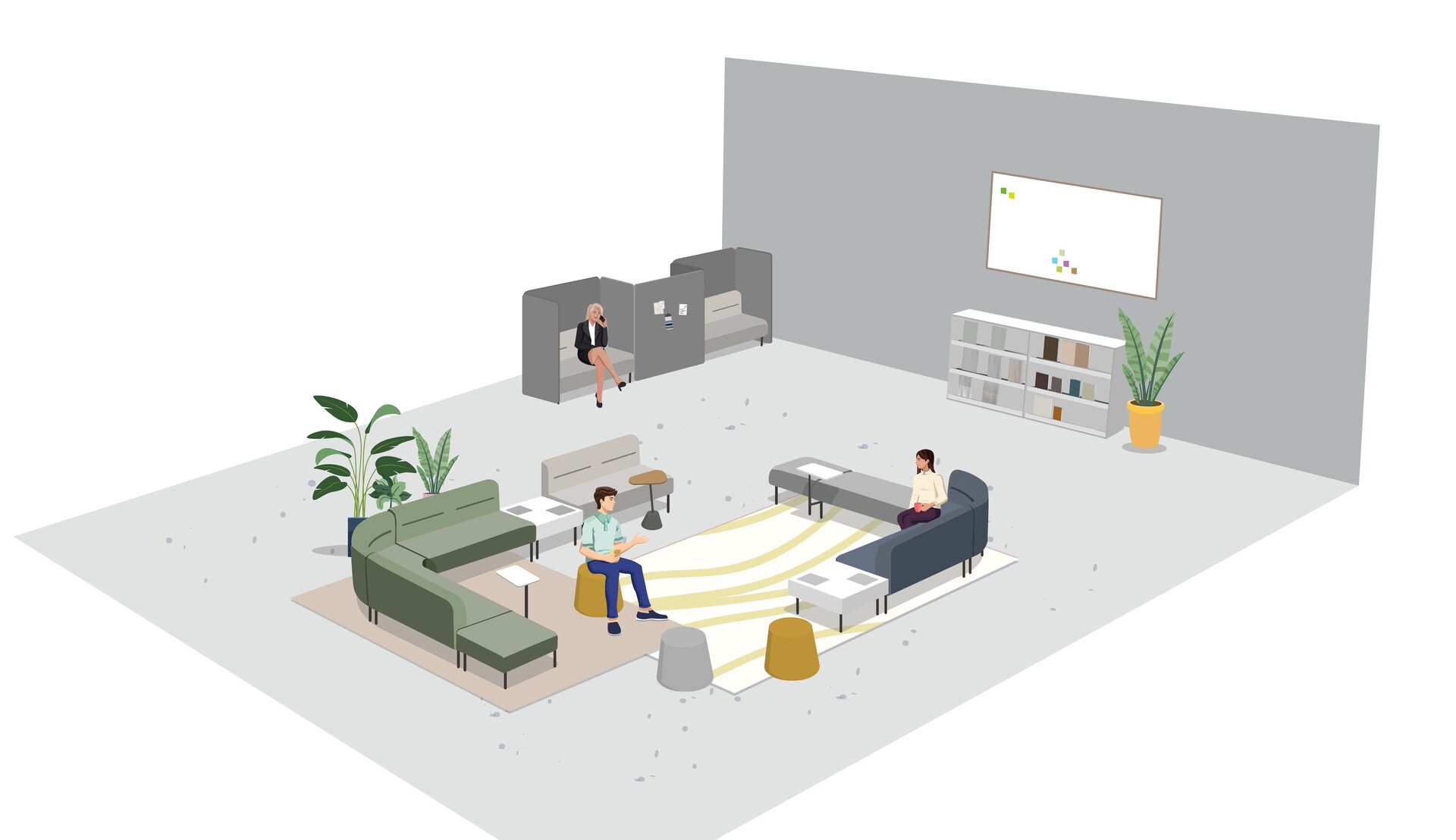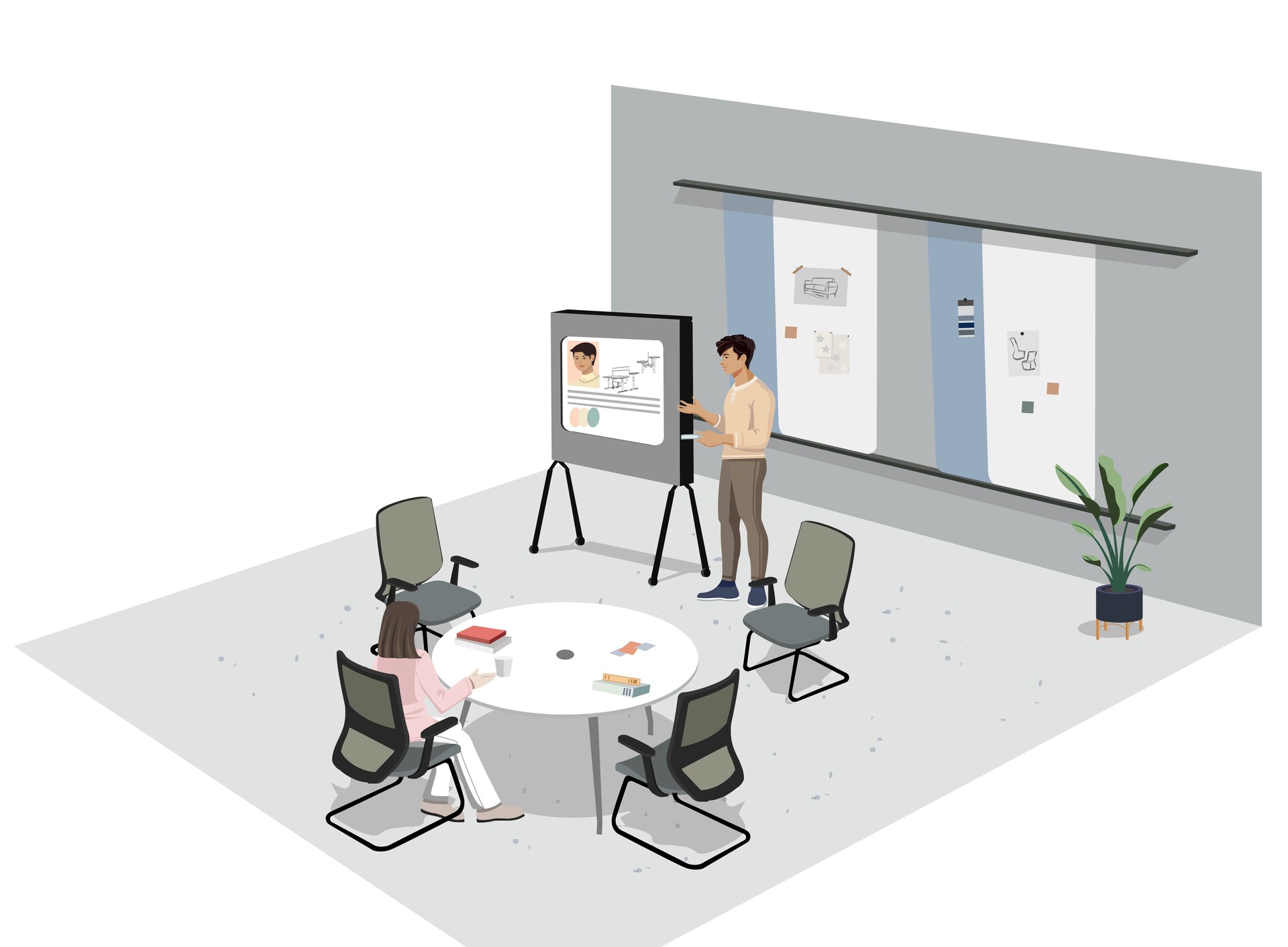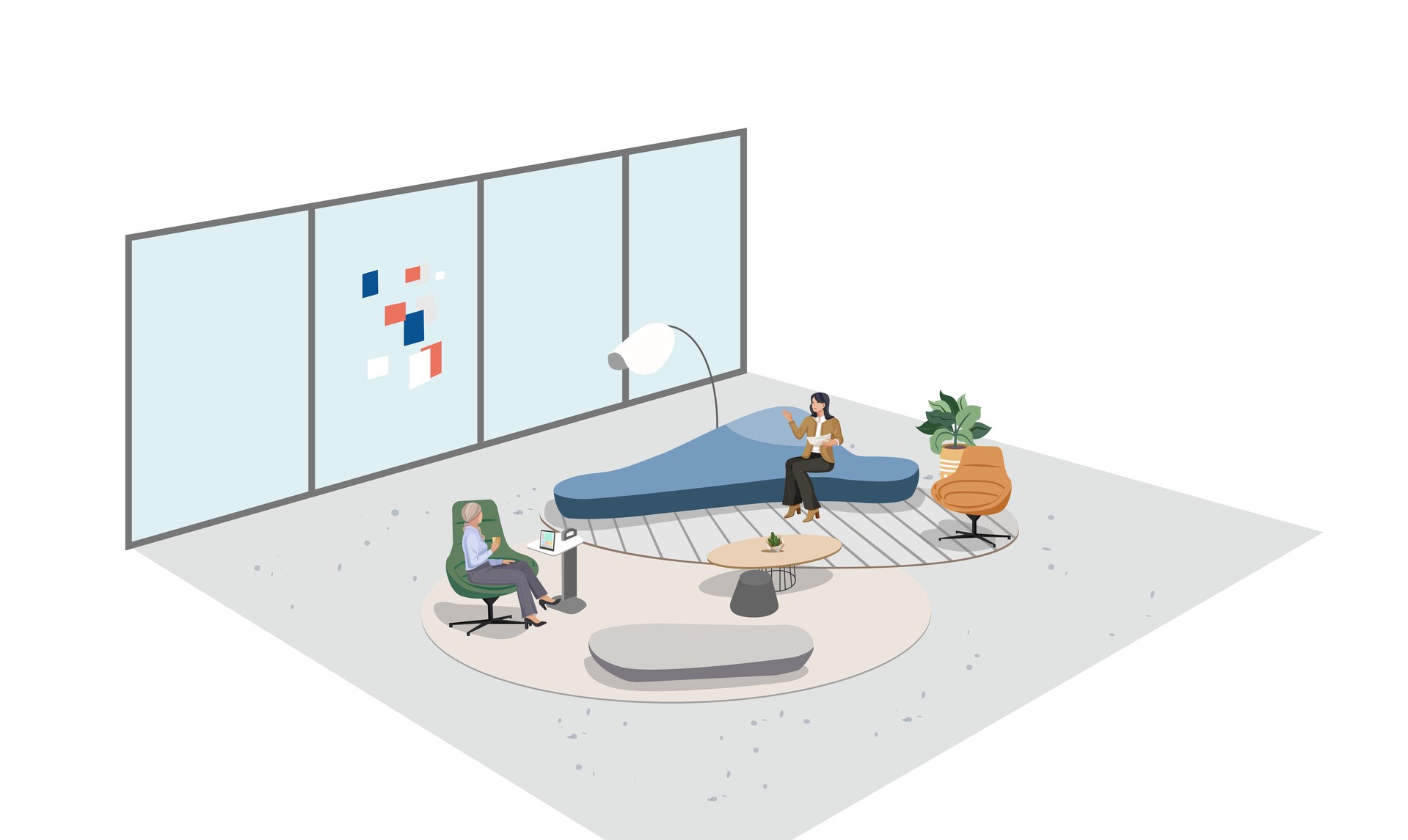
In the workplace, space is a key element that influences engagement, innovation, and productivity. Relationships are easier to form through face-to-face interaction with coworkers and are influenced by how we perceive space. Although workplace spatial dynamics have been evolving for some time, the pandemic has thrown these changes into much greater relief.
The secret to finding a balance would be to offer a range of work environments, allowing employees to select the ideal work setting based on how "close" they want to be to one another. How close, though, is too close? Any invasion of one's privacy may lead to tension, as well as problems with privacy, interruption, and acoustics. In the workplace, proxemics is essential for teamwork, communication, and culture.
Let's dig in and learn more about Proxemics.

What is Proxemics?
Proxemics, the study of interpersonal space, or the physical and social distance we keep between ourselves and others to feel safe and at ease, was pioneered by anthropologist Edward T. Hall in the 1960s. In other words, proxemics is the study of the ways in which people might connect with one another in a physical space. Additionally, it needs to be grounded in a culture where everyone has their own expectations. Intriguing applications for proxemics, the study of personal space and spatial interactions, may be found in the workplace.
According to anthropologist Edward T. Hall, most people have intimate, personal, social, and public zones. People feel more at ease around other people if these four zones are properly taken into account.
Public Space: 12 to 25 feet apart; as a result, it is difficult to maintain eye contact and one must talk loudly to be heard. Physical interaction is minimal.
Social Space: 4 to 12 feet apart; Because we can't touch or feel body heat, we must rely on visual and aural clues to establish connections. There are casual introductions, business dealings, and official discussions. Also known as the business zone.
Personal Space: 1.5 to 4 feet apart; close enough to make physical touch, make eye contact clearly, and engage in social exchanges. Also, known as the bubble zone.
Intimate Space: 0 and 1.5 feet apart; close enough to feel body heat and pheromones. Only between lovers and members of the closest circle of proximity, including family. Hence, it is not applied to public spaces.

Perception of spaces and its effects on people
If our peripersonal space, which is the area immediately around our bodies, is breached, it may be unsettling. Additionally, the design and layout of the office must take cultural differences in personal space allocation into account. For instance, British people are more guarded about their personal space. Researchers discovered that people in warmer areas favored closer distances with strangers compared to people who reside in colder regions in a published study examining interpersonal distances throughout the world. Americans keep an imaginary barrier around themselves even while in a busy queue. Chinese people, on the other hand, find it problematic when friends are too far apart from one another.
Different people have different definitions of what actually qualifies as an acquaintance, which makes defining personal space more difficult. It's crucial to remember that a person always occupies the center of their own space. Any invasion of one's privacy can be stressful, but it can also disturb conversations and affect the room's acoustics. The real distance between social, personal, and public space has cultural roots and cannot be understood in ‘one-size-fits-all’ way.
“Culture is not made up but something that evolves which is human.”
Edward T. Hall

Incorporating principles of proxemics in the workplace
The proximity to people is frequently associated with one's environment's unhappiness. Employees have more stress as a result, which affects their mood and performance. It's hypothesized that this may be the cause of open office layouts making workers less productive. In terms of Proxemics, privacy refers to a purposeful and transient condition of exclusion from the general public. In terms of Proxemics, privacy refers to a purposeful condition of temporary exclusion from the general public.
Open office designs encourage collaboration and teamwork whereas private offices or cubicles offer greater solitude. The type of work being done and employee preferences should be taken into account when choosing a layout. Everyone and every activity won't work well in an open-plan environment, therefore the best option is probably to blend diverse places with task-oriented zones. Respecting personal space at work is essential for comfort and to prevent privacy invasion. Giving staff members adequate space to work at their workstations or during meetings, for instance. Lounge solutions may promote emotions of trust and a sense of collaboration by bringing individuals closer together, but not so near that they feel uncomfortable or intimidated.

Communication, knowledge networks, and relationship-building at work are all impacted by proxemics and the productivity of workplace relationships can be improved. Face-to-face interactions allow for simpler communication and the development of connections that foster a strong organizational culture. Employees of today look for companies that provide them great cultures in addition to resources.